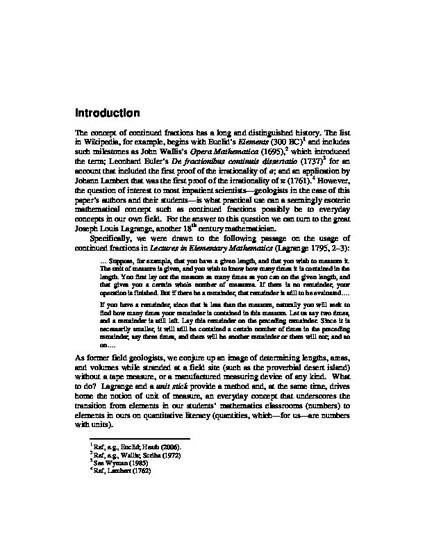
- measurement,
- units of measure,
- quantitative literacy,
- continued fractions,
- arithmetic of fractions,
- measurement error,
- accuracy vs. precision,
- geoscience education
GLY 4866, Computational Geology, provides an opportunity, welcomed by our faculty, to teach quantitative literacy to geology majors at USF. The course continues to evolve although the second author has been teaching it for some 20 years. This paper describes our experiences with a new lab activity that we are developing on the core issue of measurement and units. The activity is inspired by a passage in the 2008 publication of lectures that Joseph Louis Lagrange delivered at the Ecole Normale in 1795. The activity envisions that young scientists are faced with the need to determine the dimensions of a rectangle with no measuring device other than an unruled stick of unknown length – to hundredths of a stick length. Following Lagrange, the students use the stick to measure the lengths with continued fractions, and then they reduce the continued fractions and convert them to decimal form. In the process, these student veterans of calculus instruction learn that as a group they are not very good at the arithmetic of fractions, which they thought they learned in the fifth grade. The group score on a continued fraction item improved from 44% on the pre-course test to 84% on the post-course test in the first semester in which the new lab was included (Fall 2015).
Available at: http://works.bepress.com/len_vacher/130/
